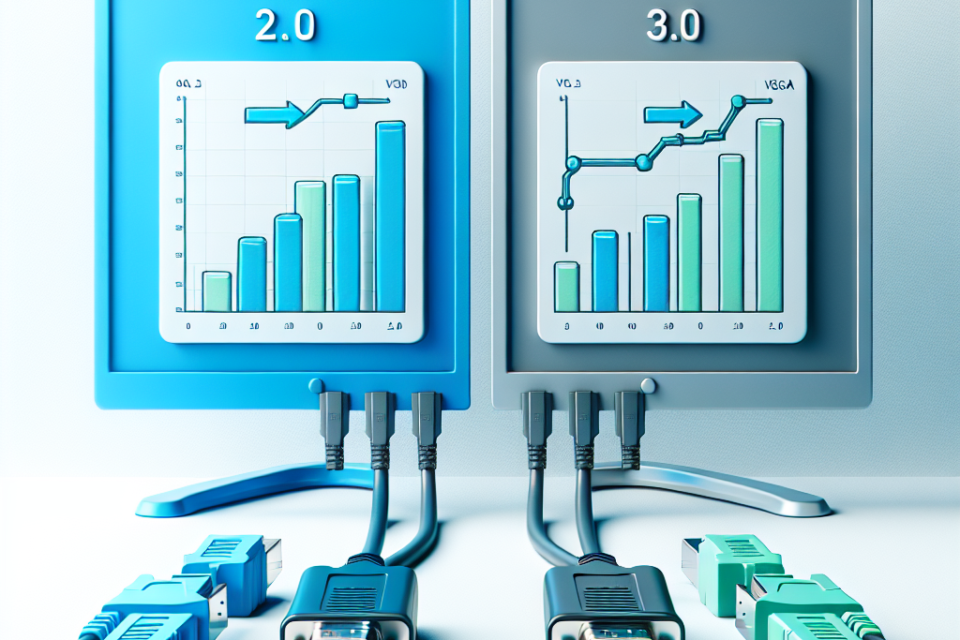Are USB 2.0 and USB 3.0 to VGA adapters different in performance?

Understanding USB Standards
Before diving into the differences between USB 2.0 and USB 3.0 to VGA adapters, it’s crucial to understand what these terms mean. USB, or Universal Serial Bus, is a standard for connecting devices, and it has evolved over the years. USB 2.0, introduced in 2000, offers data transfer speeds up to 480 Mbps, while USB 3.0, introduced in 2008, significantly increases this speed to 5 Gbps, making it ten times faster.
What is a VGA Adapter?
A VGA (Video Graphics Array) adapter is used to connect a computer to a monitor, projector, or display that uses a VGA port. These adapters can be vital for connecting older devices or for situations where HDMI or DisplayPort connections are not available.
Performance Differences
Data Transfer Speed
The first major performance difference between USB 2.0 and USB 3.0 to VGA adapters is the data transfer speed. USB 3.0’s higher bandwidth allows for smoother video playback and better resolution output. This is particularly notable when streaming high-definition content or using multiple displays.
Video Resolution Support
USB 3.0 to VGA adapters typically support higher video resolutions compared to their USB 2.0 counterparts. While USB 2.0 adapters may struggle with resolutions above 800×600, USB 3.0 adapters can handle 1080p and higher, making them ideal for modern applications.
Latency and Frame Rate
Latency refers to the delay before the transfer of data begins following an instruction. USB 3.0 adapters are generally better in terms of latency, leading to more responsive performance, especially in gaming or real-time applications. Additionally, USB 3.0 allows for a higher frame rate which is crucial for fast-moving visuals.
Compatibility
When considering performance differences, compatibility is also key. USB 3.0 adapters are backward compatible with USB 2.0 ports, meaning they can still function effectively in older systems, although at the lower USB 2.0 speeds. In contrast, using a USB 2.0 adapter on a USB 3.0 port will not provide the enhanced performance.
Real-World Applications
In real-world scenarios, the choice between USB 2.0 and USB 3.0 to VGA adapters can affect usage significantly. For instance, if you are using an external display for basic tasks like word processing or browsing, a USB 2.0 adapter may suffice. However, for graphic design, video editing, or gaming, a USB 3.0 adapter is recommended to ensure optimal performance.
Conclusion
In conclusion, USB 2.0 and USB 3.0 to VGA adapters differ significantly in performance. The advantages of USB 3.0 adapters in terms of speed, resolution support, and responsiveness make them the superior choice for users who require high-performance output. As technology continues to advance, investing in USB 3.0 adapters may be beneficial for future-proofing your setup.
